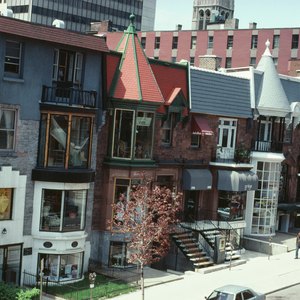
To determine what a house might sell for in the current market, a real estate professional prepares a comparative market analysis (CMA). This provides an estimate of current value, based on the final sale price of similar homes in the neighborhood. Ideally, the real estate agent locates three properties that have sold within the last six months. They should be located in the same neighborhood, or similar neighborhood to the subject property, and also be similar in size, age and design. Since no two houses are identical, the agent makes adjustments in the final sale price of each comparable to compensate for the differences between the properties.
Make a list of specific differences to look for when evaluating each property. This includes such characteristics as square footage, age, roof type, landscaping, floor covering, lot size, fencing, additional buildings and swimming pool.
Identify the differences between the subject property and each comparable property. For the real estate agent, the subject property is the listing, while the comparable property is a recently sold property that is similar to the listing.
Determine a value for each significant difference or amenity identified in the previous step. Value in this instance is not the cost of the amenity, but what a buyer might pay to have the amenity included with the property. This amount can vary according to local trends and the quality of the amenity. For example, a swimming pool might cost $30,000 to install, yet may only increase a home’s value by $10,000 or $20,000. In some instances, where local buyers don’t want pools, this "amenity" may not add any value and may even detract from value.
Subtract the value you give to an amenity (determined in the previous step) from the final sale price of a comparable property. Only do this if that particular comparable property has the amenity, and the subject property does not. For example, if one of the comparable properties sold for $100,000 and has a swimming pool, yet the subject property has no pool, you must subtract the value you gave to the pool. If you determined the value of the pool was $10,000, the adjusted sale price of the property with the swimming pool is $90,000.
Add the value of an amenity (which you determined in Step 3) to the final sale price of a comparable property. Only do this if the subject property has the amenity and comparable doesn’t. For example, if the subject property has the pool, and not the comparable, you add the value you gave to the pool to the comparable property’s final sale price.
Tips
The average of the adjusted sale prices of comparable properties determines the estimate of the subject property’s current value.
References
- "Modern Real Estate Practice"; Fillmore Galaty, et al.; 2006
Tips
- The average of the adjusted sale prices of comparable properties determines the estimate of the subject property's current value.
Writer Bio
Ann Johnson has been a freelance writer since 1995. She previously served as the editor of a community magazine in Southern California and was also an active real-estate agent, specializing in commercial and residential properties. She has a Bachelor of Arts in communications from California State University, Fullerton.

